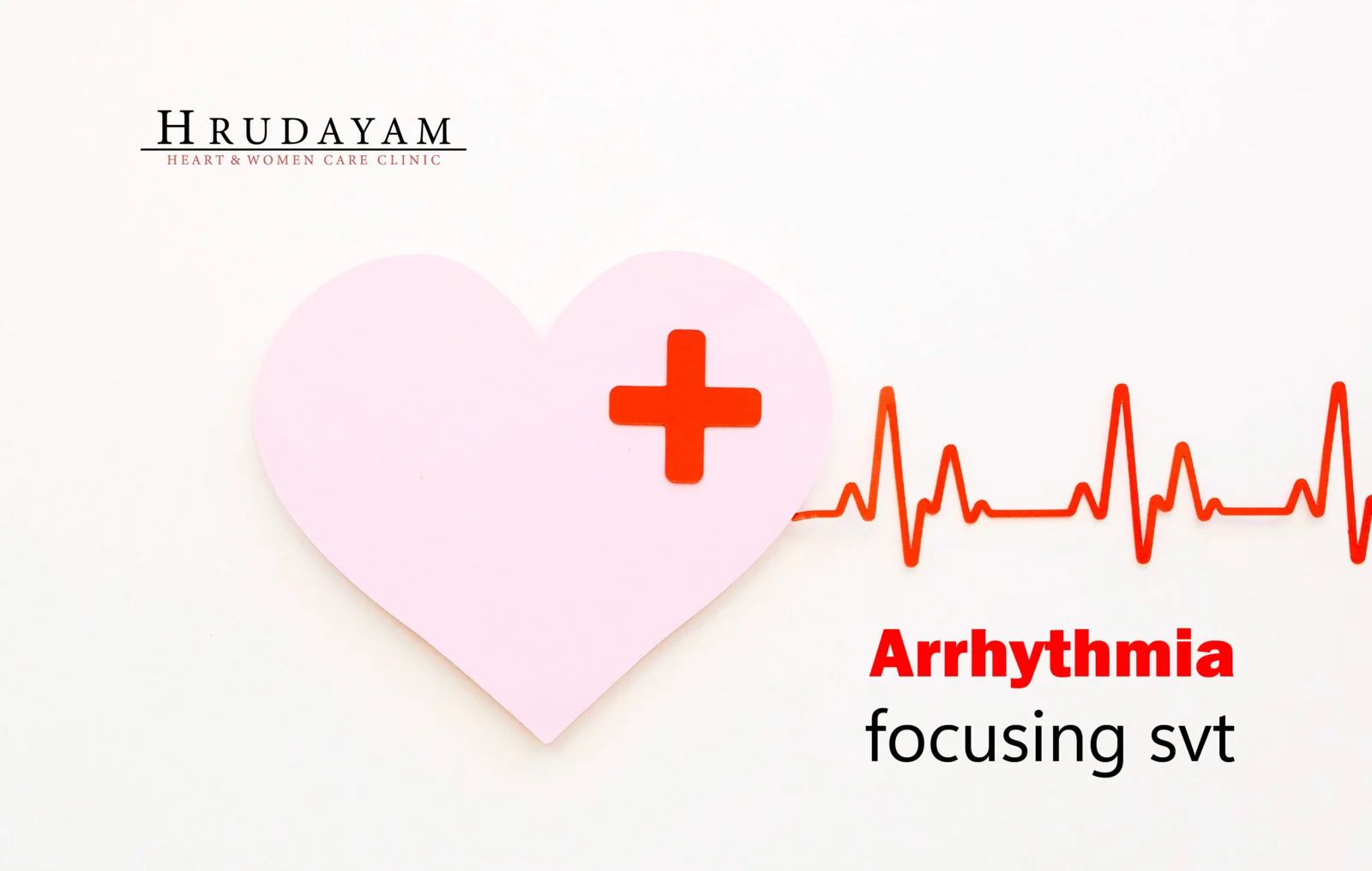Arrhythmia – Focusing SVT
What is an arrhythmia?

What are the types of arrhythmias?
- Supraventricular arrhythmias are abnormal heart rhythms that originate in the atria, the upper chambers of the heart. The term “supra” refers to “above,” while “ventricular” pertains to the heart’s lower chambers, the ventricles.
- Ventricular arrhythmias are irregular heart rhythms that start in the ventricles, the lower chambers of the heart.
- Bradyarrhythmias are characterized by slow heart rates, often resulting from issues within the heart’s conduction system, such as problems with the sinoatrial (SA) node, atrioventricular (AV) node, or the HIS-Purkinje network.
What are the types of supraventricular arrhythmias?
Supraventricular arrhythmias originate in the atria or the upper chambers of the heart. These arrhythmias include various types, such as:
Paroxysmal supraventricular tachycardia (PSVT) is a condition characterized by a rapid, regular heartbeat originating in the atria. This type of arrhythmia starts and stops abruptly.
Accessory pathway tachycardias, also known as bypass tract tachycardias, are rapid heart rhythms caused by an abnormal, extra electrical pathway connecting the atria and ventricles. This extra pathway allows electrical impulses to travel through both the normal route and the abnormal pathway, causing the heart to beat excessively fast. An example of this condition is Wolff-Parkinson-White syndrome.
AV nodal re-entrant tachycardia (AVNRT) is a rapid heart rate caused by the existence of multiple pathways within the atrioventricular (AV) node.
Atrial fibrillation is a common type of irregular heart rhythm. It occurs when numerous electrical impulses originate and spread throughout the atria, competing to pass through the AV node. This causes a rapid and disorganized rhythm. As the impulses move chaotically through the atria, the coordinated contraction of the atria is lost.
What are the symptoms of an arrhythmia?
An arrhythmia may not show any symptoms and can remain “silent.” A doctor might detect an irregular heartbeat during an examination by checking your pulse, listening to your heart, or conducting diagnostic tests.
What causes arrhythmias?
- Coronary artery disease
- Abnormal heart tissue (caused by genetic or acquired factors)
- High blood pressure
- Structural changes in the heart muscle (cardiomyopathy)
- Heart valve disorders
- Electrolyte imbalances, such as sodium or potassium irregularities
- Damage from a heart attack
- Recovery after heart surgery
- Other underlying medical conditions
How is an Arrhythmia Diagnosed?
If you’re experiencing symptoms of an arrhythmia, it’s important to schedule an appointment with a cardiologist. You might also consider seeing an electrophysiologist, a cardiologist with specialized training in diagnosing and treating heart rhythm disorders. After evaluating your symptoms and conducting a physical exam, the cardiologist may recommend a range of diagnostic tests to confirm the presence of an arrhythmia and determine its underlying causes. These tests help identify irregular heart rhythms and their possible origins.
- An Electrocardiogram (ECG) provides a visual representation of the electrical impulses traveling through the heart muscle. This test is performed by placing small, adhesive electrodes on your chest, arms, and legs to record the activity on graph paper.
- Ambulatory monitors, like the Holter monitor, can also be used to track heart activity over an extended period.
- A stress test is designed to record arrhythmias that may occur or worsen with exercise. It can also help identify any underlying heart or coronary artery disease linked to arrhythmias.
- An echocardiogram, a type of ultrasound, creates images of the heart to assess whether heart muscle or valve conditions are contributing to an arrhythmia. This test can be performed while the patient is at rest or during physical activity.
Electrophysiology Study (EPS) is a specialized heart catheterization procedure designed to assess the electrical system of the heart. During the procedure, catheters are inserted into the heart to measure its electrical activity. The EPS helps identify the cause of abnormal heart rhythms and determine the most effective treatment. It allows for the safe reproduction and termination of arrhythmias during the test.
